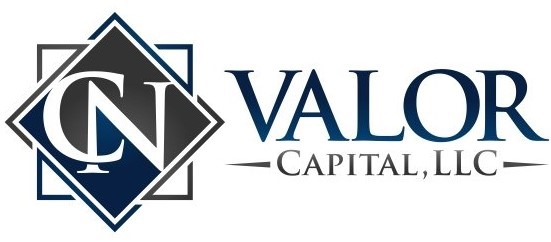Investing in real estate, private equity, or other alternative investments often involves navigating complex financial structures. One such structure that has gained significant prominence is the investment waterfall. While the term may sound obscure, understanding the investment waterfall is essential for both investors and fund managers to ensure fair distribution of profits and alignment of interests. In this comprehensive guide, we will demystify the investment waterfall, explore its key components, variations, and calculations, and discuss best practices for its implementation.
The investment waterfall is a distribution mechanism used in alternative investments to allocate profits among different parties involved in a project or fund. It serves as a contractual framework that outlines how cash flows and profits are distributed between investors and sponsors, ensuring transparency and fairness in the process. By defining the order and priority of distributions, the investment waterfall determines the financial outcomes for each stakeholder.
What is the Investment Waterfall?

The investment waterfall represents the flow of cash and profits from an investment project or fund to its investors and sponsors. It consists of several key components, each with its own set of rules and calculations. Understanding these components is crucial for comprehending the intricacies of the investment waterfall.
Preferred Return
The preferred return, also known as a hurdle rate, is the minimum rate of return that investors must receive before the sponsor can participate in profits. It acts as a protective measure for investors and ensures they receive a predetermined portion of profits.
Distribution of Profits
Once the preferred return is met, the investment waterfall defines how profits are distributed among investors and sponsors. This distribution is often based on predetermined percentages or ratios and may involve multiple tiers or levels.
Clawback Provision
The clawback provision is a mechanism that addresses potential imbalances in profit distributions. It allows the sponsor to return excess distributions to investors if certain conditions are met, typically when the project’s final profitability differs from initial projections.
Promote Structure
The promote structure, also referred to as the carried interest, is a performance-based allocation of profits. It enables sponsors to receive an additional share of profits once investors have achieved their preferred return. The promote structure incentivizes sponsors to maximize the project’s profitability.
Understanding the Waterfall Structure
The investment waterfall structure can vary depending on the specific terms outlined in the agreement between investors and sponsors. Two key dimensions that differentiate waterfall structures are the sequencing of distributions and the basis for calculations.
Sequential vs. Pro Rata Waterfall
In a sequential waterfall, distributions occur in a predetermined order, with one tier receiving all profits before the next tier can participate. This structure ensures that investors receive their preferred return before the sponsor receives any profits. Conversely, a pro rata waterfall allows for simultaneous distributions to different tiers based on their proportional ownership.
Cash Flow vs. Gross Profit Waterfall
Waterfalls can also differ based on the basis for calculations, either cash flow or gross profit. In a cash flow waterfall, distributions are based on the actual cash generated by the investment project or fund. Conversely, a gross profit waterfall considers profits before deducting expenses, providing sponsors with a share of the project’s overall profitability.
Common Variations of the Investment Waterfall
While the basic components and structures of the investment waterfall remain consistent, there are variations that adapt to different investment strategies and objectives. Some of the common variations include the European waterfall, American waterfall, and lookback waterfall.
European Waterfall
The European waterfall, also known as the deal-by-deal waterfall, focuses on individual investment projects rather than the overall fund. It allows sponsors to receive a promote allocation on a project-by-project basis, promoting alignment of interests between investors and sponsors at each stage.
American Waterfall
The American waterfall, also called the deal-by-deal with catch-up waterfall, incorporates a catch-up provision. This provision allows the sponsor to catch up to the agreed-upon share of profits if they haven’t received their full promote allocation at a certain point.
Lookback Waterfall
The lookback waterfall accounts for the project’s cumulative performance over time. It recalculates the profit distributions periodically, considering the overall profitability of the project instead of focusing solely on the most recent period. This structure allows for a more balanced allocation of profits and can protect investors from underperforming projects.
Calculating Distributions in the Investment Waterfall

Calculating distributions in the investment waterfall requires an understanding of the specific terms and calculations outlined in the agreement. Let’s explore an example calculation to illustrate how distributions can be determined within the investment waterfall.
Example Calculation
Consider a real estate investment fund with a preferred return of 8% and a 70/30 profit split between investors and sponsors after the preferred return is met. The fund generates $1,000,000 in profits. Here’s how the distribution calculation would work:
- Calculate the preferred return: $1,000,000 * 8% = $80,000
- Subtract the preferred return from the total profits: $1,000,000 – $80,000 = $920,000
- Allocate profits based on the agreed-upon split: $920,000 * 70% (investors) = $644,000 and $920,000 * 30% (sponsors) = $276,000
- Distribute profits accordingly, considering any additional terms or conditions outlined in the investment agreement.
Potential Challenges and Risks
While the investment waterfall is a valuable tool for structuring alternative investments, it is not without its challenges and risks. Recognizing and addressing these potential pitfalls is essential for maintaining transparency and alignment of interests.
Complexity and Confusion
The investment waterfall can be complex, involving multiple tiers, calculations, and variations. Without clear documentation and communication, investors may struggle to understand the distribution process, leading to confusion and potential disputes.
Misalignment of Interests
The investment waterfall should align the interests of investors and sponsors. However, poor structuring or disproportionate distribution terms can create conflicts of interest. Sponsors may prioritize their own profits over the overall success of the investment, potentially damaging the relationship with investors.
Lack of Transparency
Transparency is crucial in the investment waterfall. If investors don’t have access to accurate and timely financial reporting, they may not be able to assess the project’s performance or verify the fairness of profit distributions. This lack of transparency can erode trust and confidence in the investment.
Best Practices for Structuring the Investment Waterfall
To maximize the effectiveness of the investment waterfall, consider the following best practices when structuring your investment agreements:
Clear and Consistent Documentation
Provide investors with comprehensive and easily understandable documentation that outlines the terms, calculations, and variations of the investment waterfall. Clear and consistent language will minimize confusion and disputes.
Alignment of Interests
Ensure that the investment waterfall aligns the interests of all parties involved. Set reasonable preferred returns and promote structures that incentivize sponsors to maximize the project’s success, ultimately benefiting investors.
Regular Communication and Reporting
Establish a framework for regular communication and reporting to keep investors informed about the project’s performance and profit distributions. Timely and accurate information fosters transparency and strengthens the investor-sponsor relationship.
Conclusion
The investment waterfall is a fundamental concept in alternative investments, providing a structured approach to distributing profits among investors and sponsors. By understanding its key components, variations, and calculations, investors and sponsors can navigate this complex mechanism with confidence. Clear documentation, alignment of interests, and transparent communication are vital to ensuring a fair and successful investment waterfall.
FAQs
1. Can the investment waterfall be customized to suit specific investment strategies?
Yes, the investment waterfall can be tailored to meet the requirements and objectives of specific investment strategies. It allows for flexibility in structuring the distribution of profits while maintaining fairness and alignment of interests.
2. What happens if a project underperforms and cannot meet the preferred return?
If a project fails to meet the preferred return, sponsors may need to forgo their promote allocation until the project’s performance improves. This ensures that investors receive their minimum expected returns before sponsors participate in profits.
3. Are there any legal requirements or regulations governing the investment waterfall?
The investment waterfall is primarily a contractual agreement between investors and sponsors. While there may be legal considerations and regulations surrounding the overall investment, the specifics of the investment waterfall are typically determined by the parties involved.
4. How often should profit distributions occur within the investment waterfall?
The frequency of profit distributions depends on the terms outlined in the investment agreement. Some waterfalls distribute profits annually, while others may have different intervals, such as quarterly or semi-annually.
5. Is the investment waterfall limited to real estate investments?
No, the investment waterfall can be applied to various alternative investments, including private equity, venture capital, and infrastructure projects. Its versatility makes it a widely used framework for profit distribution in alternative investment vehicles.








